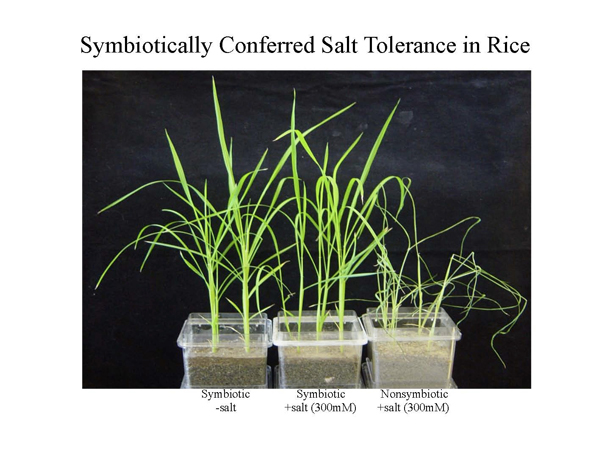Yesterday, President Obama signed into law a continuing resolution aimed at keeping the federal government going amidst budget talks. However, embedded within the nearly 800 page resolution — HR933 — is Section 735, a provision that has become popularly known as the “Monsanto Protection Act”. Here is the text of Section 735 in full:
SEC. 735. In the event that a determination of non-regulated status made pursuant to section 411 of the Plant Protection Act is or has been invalidated or vacated, the Secretary of Agriculture shall, notwithstanding any other provision of law, upon request by a farmer, grower, farm operator, or producer, immediately grant temporary permit(s) or temporary deregulation in part, subject to necessary and appropriate conditions consistent with section 411(a) or 412(c) of the Plant Protection Act, which interim conditions shall authorize the movement, introduction, continued cultivation, commercialization and other specifically enumerated activities and requirements, including measures designed to mitigate or minimize potential adverse environmental effects, if any, relevant to the Secretary’s evaluation of the petition for non-regulated status, while ensuring that growers or other users are able to move, plant, cultivate, introduce into commerce and carry out other authorized activities in a timely manner: Provided, That all such conditions shall be applicable only for the interim period necessary for the Secretary to complete any required analyses or consultations related to the petition for non-regulated status: Provided further, That nothing in this section shall be construed as limiting the Secretary’s authority under section 411, 412 and 414 of the Plant Protection Act.
Critics have argued that this passage explicitly eliminates the power of federal courts to stop the sale of genetically modified foods “despite what health issues may arise concerning their use in the future.”
Yet, I find this talking point disingenuous. If I’m reading Section 735 correctly, what’s actually being said is this: if a seed (genetically-engineered or otherwise) is petitioned to the Secretary of Agriculture’s office as needing to be regulated, that the unregulated (but legal) sale of the seed shall be allowed to continue until such time as the Secretary of Agriculture has time to investigate whether or not the petition is warranted.
It doesn’t hand over power to Monsanto, or any other company in the business of producing genetically-engineered food. It simply gives food-growers and developers the ability to do business until the matter can be resolved. Or, in other words, it simply establishes that a food is regulated when the Secretary of Agriculture’s office can rule that a food should be regulated, not when there is a proposal submitted that a food should be regulated.
So, let’s not get ahead of ourselves here.
Look, I get it. This whole controversy isn’t based on farmers’ rights, or on economics. It’s based on mass hysteria that arises when people hear “genetically modified food” and get an immediate mental image of this:

There are too many critics of GMOs that believe, or at least perpetuate the common fear, that genetically modified foods are some sort of disease-ridden mutant byproduct of science gone horribly wrong. They picture ears of corn that glow in the dark, beef that can cause kids to prematurely undergo puberty, and tomatoes that grow to the size of houses.
These ideas couldn’t be farther from the truth.
The field of genetically-engineered food has two primary focuses: 1) to increase the efficiency and yield of crops with a particular emphasis on modifying foods to survive climates unfriendly to conventional agricultural practices, and 2) to increase the nutritional content of commonly-eaten foods to promote human survival and health without having to significantly modify diet, particularly in areas of the world where food is already hard to come by, let alone sufficient food to meet nutritional demands.
So, for example, genetically modified rice strains developed in part through the University of Arizona are significantly more resistant to drought than unmodified rice plants, producing healthy crops even with little watering.

This is particularly noteworthy in a state like Arizona, where an impending water shortage is predicted to completely derail the state’s (surprisingly successful) rice-growing industry. But, one can also imagine the profound implications of drought-resistant rice strains in parts of the Third World, where harsh and dry desert conditions combined with overall poverty and inaccess to food, results in the death of 15 million children from famine every year.

Sure, we’ve all seen the commercials: $1 a day could feed X number of starving children. But, think of the potency if we could export agricultural technology to these regions of the world, so that we’re not just feeding folks who need food, but arming folks with the tools to be able to grow the food to feed themselves.
Yet, I was shocked to read on Wikipedia in research for this blog post, that some critics of GMOs actually argue — unethically, in my opinion — that using genetically-engineered crops to help solve the world famine problem is counter-productive because this only encourages a global and unsustainable population boom. Implicitly, hungry people in the Third World should be allowed to die to keep the global population of humans low.
People who think the world can afford to ignore technology that increases agricultural yield are people who’ve never had to struggle with country-wide hunger. These are people who are used to a grocery store on every corner, and a McDonald’s drive-through a short car-ride away. Those of us fortunate enough to live in the United States and Canada, as well as parts of Europe, forget how good we have it when it comes to food; we take for granted a food abundance that others couldn’t even imagine as being normal.
I remember when I was a kid, my uncle — a well-educated, modestly affluent architect living in Taipei, Taiwan — came to visit us in Canada. I remember that we took him grocery shopping one afternoon. This supermarket — a Sun Valley grocery store (a Canadian chain that I just found out is now closed — was one of the highlights of my uncle’s trip. He walked into the front door and was overwhelmed by the piles of fresh produce, just sitting out for the choosing. He couldn’t believe the amount of it, the diversity of it, the freshness and the size, and how most of it was just waiting to be purchased or even — god forbid — thrown away. My uncle had great access to food in Taipei, and even he couldn’t believe how plentiful crops are in the West. A trip to Sun Valley market was one of his long-standing traditions every time he came to visit afterwards.
Yet, when’s the last time the produce aisle at your local Stop & Shop brought a tear of joy to your eye?
The second criticism against genetically-modified foods is that it’s unsafe. This criticism I find to be particularly spurious. The scientific community has pretty much reached a consensus on this subject: genetically-engineered foods are just as safe as non-engineered foods for human consumption; which is to say, there’s no scientific evidence supporting the notion that GMOs cause cancer or some other such nonsense.
And indeed, if one takes a minute to think about this, one sees how the conclusion makes sense. All we need to do is consider what a GMO actually is, and how it’s made, to realize that the risk to humans is low. In short, a scientist finds a gene from within a plant’s existing genome or within a related plant (or, occasionally but rarely, animal) species and introduces a modification into the target plant’s genome to either modify the existing gene or to get it to express the new gene. The scientist does this by injecting the plant with the new genetic material, and growing offspring that contain the specific, designed mutation.
An engineered plant is not dangerous. It contains no active virus or other particle remnants of the gene delivery system. It is, in essence, a rice plant that has been designed to express a special gene to alter the plant’s behaviour so that it behaves in a desirable fashion.

I should know; I spend my days working with genetically-engineered organisms, and I’m no more afraid of them as I am of a regular old house mouse.
Using genetic-engineering to produce a mutant strain of plant is no different than if conventional cross-fertilization techniques were used to generate a mutant strain — a technique that has given us, among other foods, the pomelo, the grapefruit, and virtually every kind of apple you’ve ever eaten. Incidentally, this is also how every strain of dog ever was anyone’s pet came to be. Yet, people are afraid of genetic engineering when in the guise of science, and are not even remotely alarmed when it comes in the guise of agriculture.
Eating a genetically-engineered rice plant is no more dangerous than eating a head of broccoli; both are mutant forms of their native plants that have been engineered (in one case, directly, and in the other case through generations of specialized breeding) to favour certain traits over others. Neither of these plants will give you — nor should they ever be suspected of giving you — cancer. I mean, really, there’s about as much danger of this as there is of eating a stalk of celery and being afraid you’re going to turn into one.
All that being said, there’s obviously going to be some lasting concerns over the integration of genetically-engineered foods into our society. Do I think that genetically-engineered foods should be labelled? Absolutely, but along with a label describing the extent of the engineering. I think that informed consumers breeds responsible consumers.
And, certainly, I don’t think there should be any measure to eliminate federal power to regulate GMOs, or any foods. Not only should the federal government be able to regulate foods in the event of a demonstrated health and safety risk, but regulation is also essential to mitigate other real dangers of GMOs. For example, crops engineered to produce antibiotics that reduce disease risks that can wipe out an entire season’s crops can also have profound impacts on the local biodiversity, and runs the risk of producing antibiotic-resistant strains of disease. Our society already suffers from an over-dependence on antibiotic usage; its infiltration into the agricultural industry is worrisome. Finally, robust crops run the danger of becoming invasive to their local environment; this is also a risk that can be minimized through regulation.
But, I’ve had quite enough of the hype and fear-mongering over genetically-modified foods, particularly when the drum that is widely sounded is so scientifically unfounded. And I really can’t stand the argument that misguided fears over genetically-engineered foods trumps worldwide hunger, and people who are dying from it.
